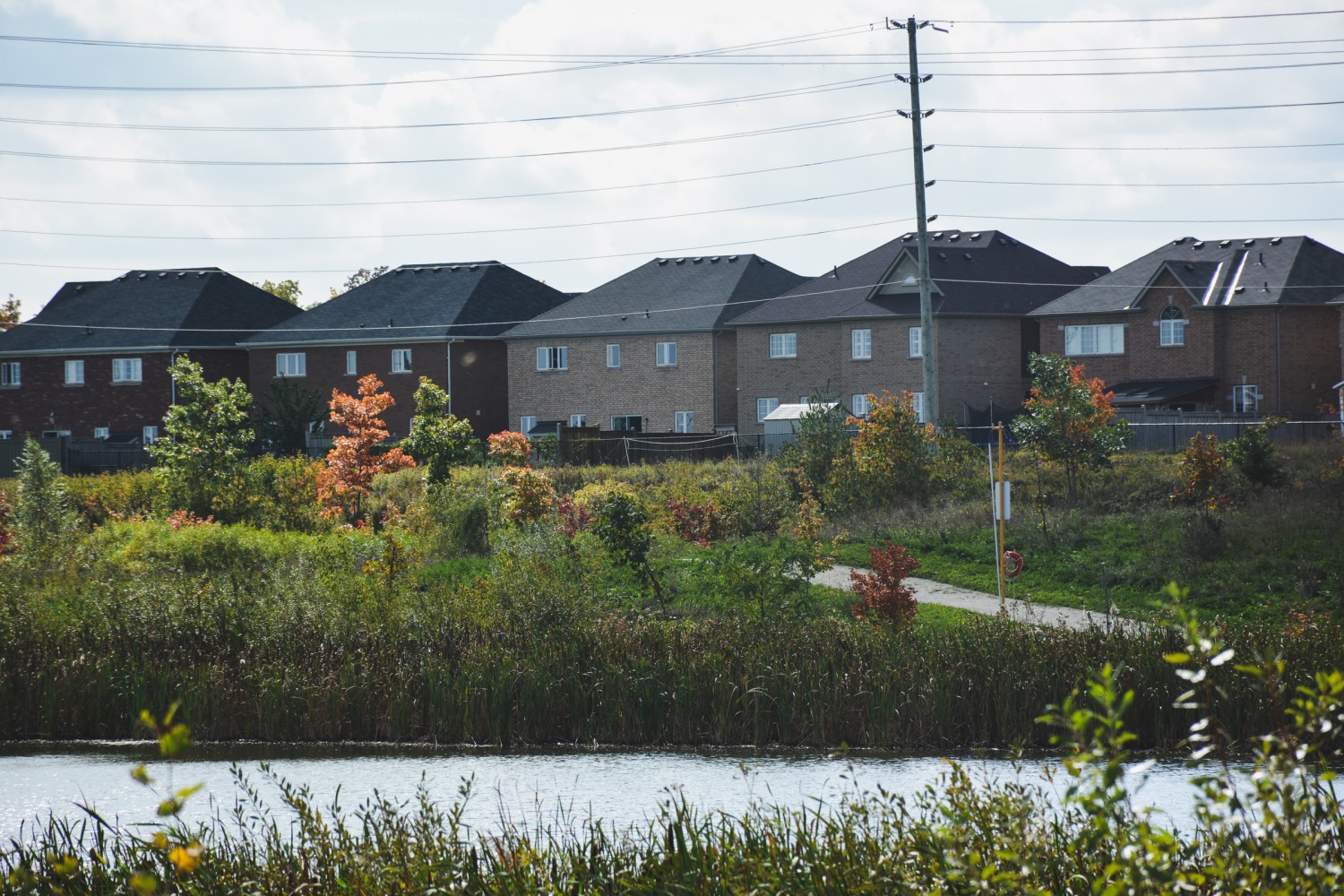
Council hopes to freeze taxes in 2019 with help from cost-saving audit
An audit of all city departments is moving ahead after a change in the office of the city’s top bureaucrat. The belt-tightening effort will help council on its path to a municipal tax freeze in the 2019 budget, says Mayor Patrick Brown.
On Dec. 12, council forged ahead with a third-party value-for-money audit of the city’s operations, despite clear reluctance from the man who held the top job at City Hall, chief administrative officer Harry Schlange. The next day it was announced by the mayor’s office that council had decided to fire the CAO.
Speaking with The Pointer, Brown acknowledged there was definitely “reticence” from Schlange to allow the audit. He says there is no hesitation from interim CAO and former commissioner of corporate services Joe Pittari to move ahead with a “hard look” at operations to see where money can be saved.
Throughout the municipal election, Brown campaigned on a fiscally responsible agenda, with a plan to freeze tax increases and shift the city toward attracting more investment from businesses and industry to take the burden off residential property tax payers.
The audit, to be completed by the international firm KPMG, is a way for the city to trim the fat and streamline processes where possible.
“We want to make sure there’s no waste or duplication of services,” Brown told The Pointer. “We just want to run the City of Brampton like you would any business.”
Brown says he’s “convinced” council will be able to freeze the municipal tax increase in the 2019 budget.
“My early indications are that I see the ingredients present in not reducing service levels and being able to achieve that,” he says.
Brown’s motion carried unanimously during council’s last meeting of 2018.
“We’ve heard loud and clear that the city wants us to try and contain tax increases, and I think this is information that would be integral for our budget deliberations,” Brown said during the meeting.
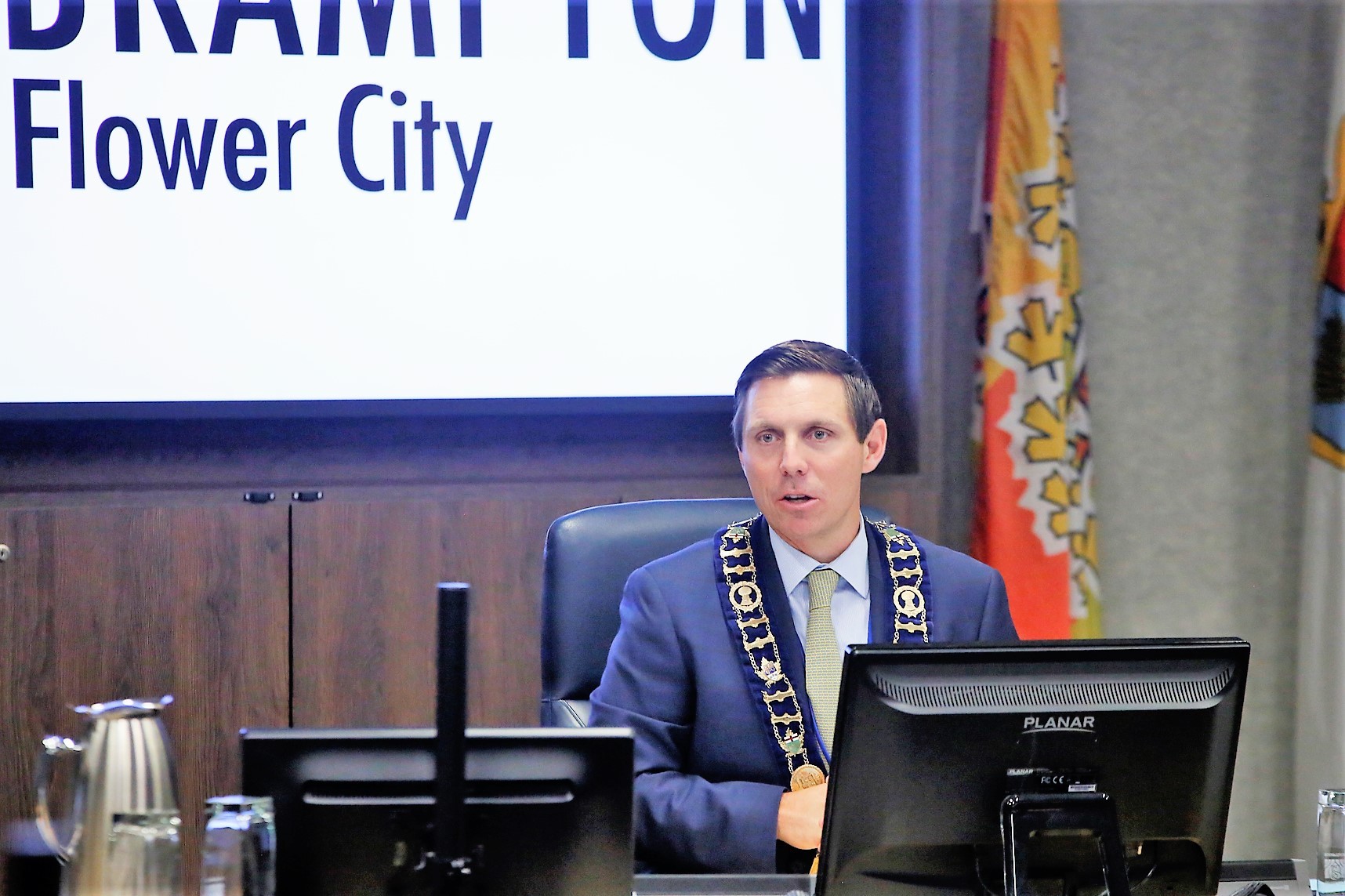
Schlange pushed back against the motion, noting such an audit would “paralyze much of the operations” at the city. He attempted to sway councillors away from the audit, explaining that money-saving efforts were already underway at city hall.
“The 2019 budget is looking very good,” he said. “At least give staff the opportunity to show you what we’ve done.”
Waiting was not on Brown’s agenda. He pushed ahead, explaining to council that the direction he received from voters was clear that this action be taken immediately. KPMG assured Brown the audit could be started this month and completed ahead of budget discussions in the new year.
The results of the audit will provide valuable information when making difficult budget decisions, Brown said, and help council on its way toward making Brampton more “tax competitive” with other GTA municipalities.
“Given the importance that we’ve heard from the public on this, I think arming council with this information is important ahead of the budget process,” he said. “I think this needs to be attended to sooner.”
Councillor Martin Medeiros noted the audit will provide a level of “transparency” for residents and create a “roadmap” for council over the next four years.
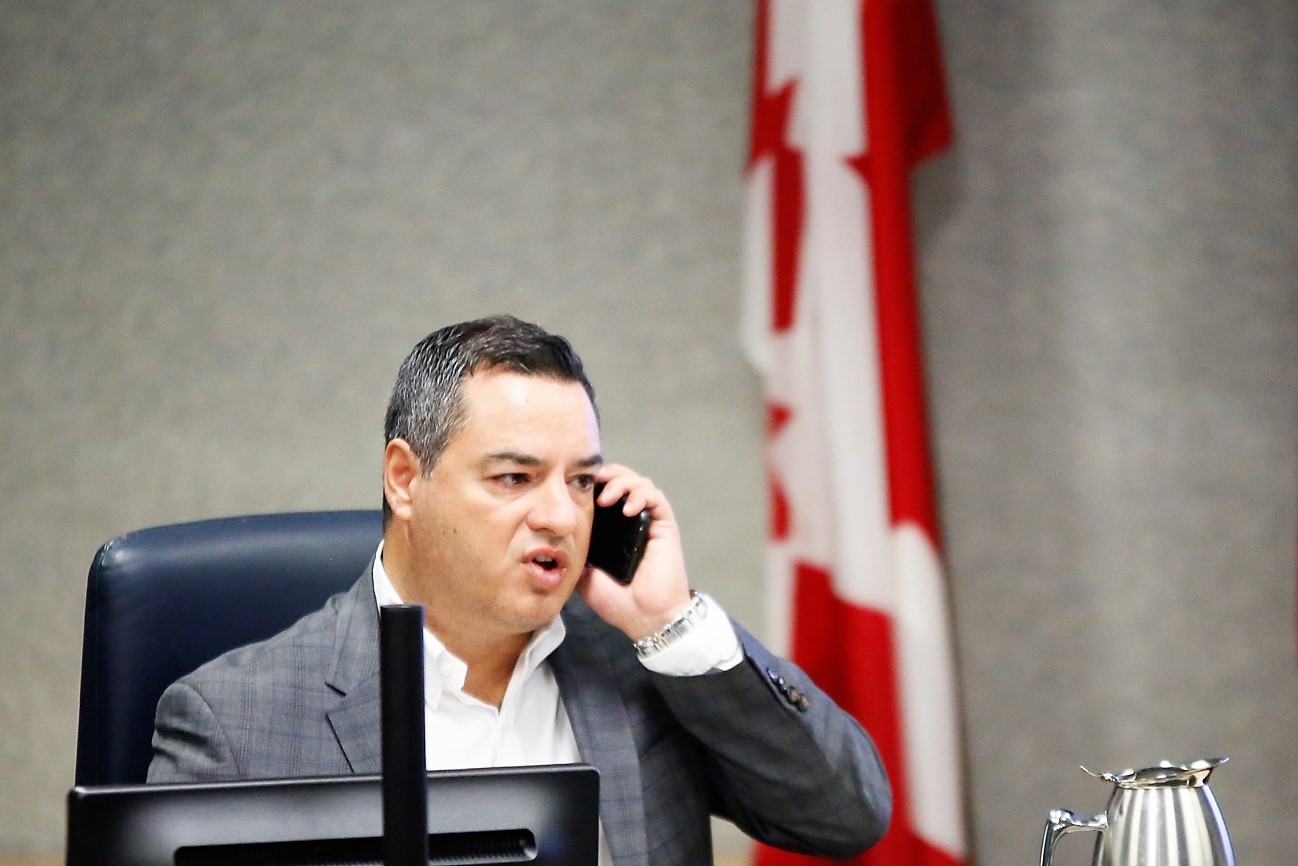
Regional Councillor Martin Medeiros
Councillor Harkirat Singh, who seconded Brown’s motion, explained the audit was not being conducted to slam staff for a lack of effort, but instead to confirm the good work that is already happening.
“This is something I did hear at the doors and I heard from local businesses as well,” he said. “I think we are doing good things and I think a third-party audit will verify that.”
While Brown was hesitant to make any predictions about where savings could be found, he told The Pointer the city want “to look at all aspects” of city operations, including staffing models.
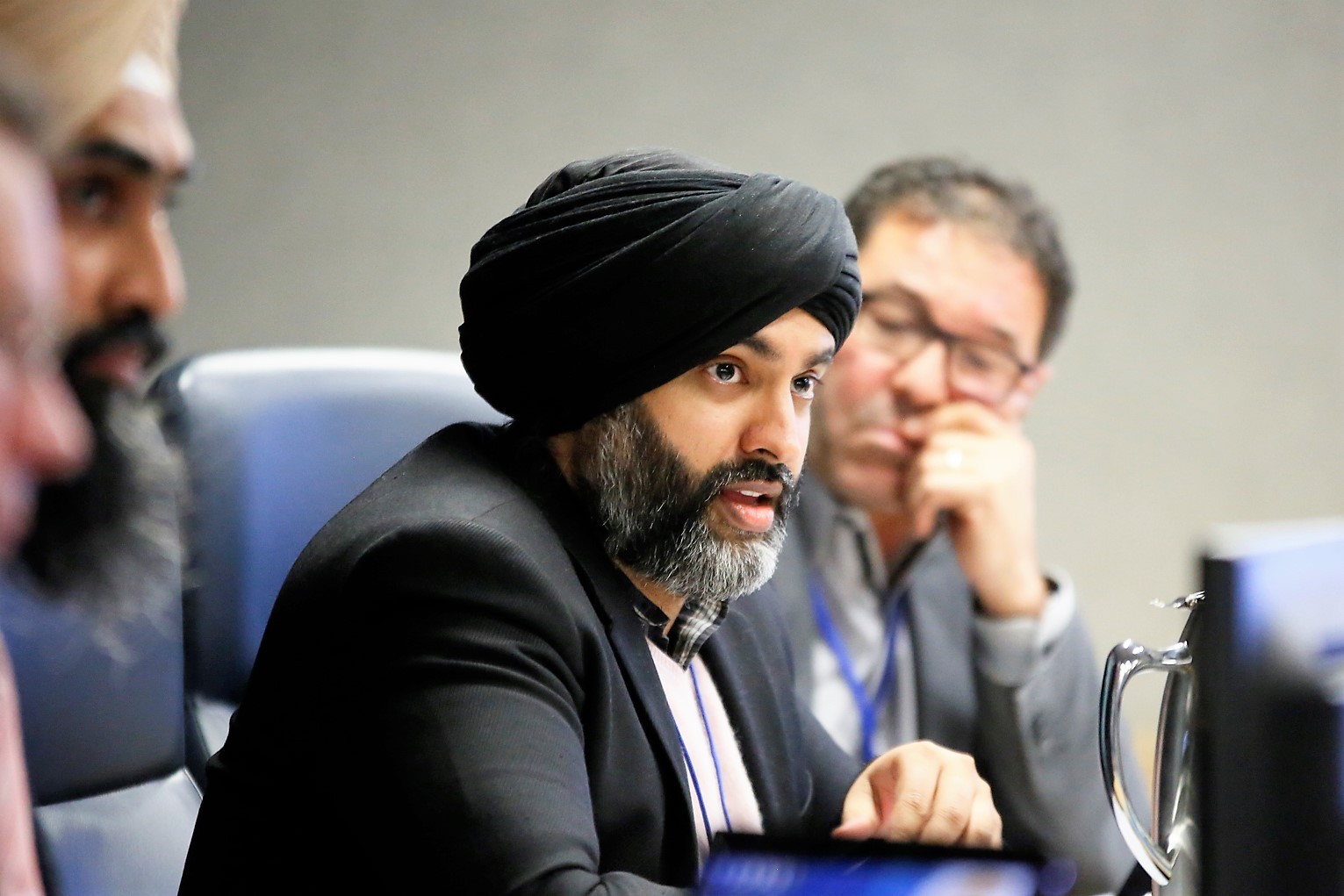
Councillor Harkirat Singh
A 2015 analysis of the city’s finances by former Ontario auditor general Jim McCarter found staffing costs at the city were not sustainable. At the time, almost all of Brampton’s revenue gains from rapid growth were being eaten up by salaries and wages for municipal employees, while service costs were rising steadily and property tax rates had increased dramatically. McCarter found that while the city was taking in 120 percent more property taxes than 10 years earlier, 94 percent of that additional revenue was going toward the city’s payroll.
Over a recent five-year period, the city’s share of the property tax bill rose at about twice the rate of inflation in Ontario. Currently, taxes on a house in Brampton with an assessed value of $500,000 are about 30 percent higher than for a home in Toronto with the same value.
“We’re looking at things outside the box,” Brown said.
Staffing is a particularly sensitive topic at Brampton City Hall, where it has been repeatedly targeted as the reason for budgetary struggles in years past.
Currently, at council’s request, the idea of doubling staff inside council offices is under study by staff. Some councillors would like to see a move to a “political model” that would allow for each councillor to have an executive assistant to assist more closely with constituent matters. A report with the anticipated costs of such a move is expected in January. Some councillors who felt the move was unfair to taxpayers did not agree with the staffing request, which was put forward by Regional Councillor Gurpreet Dhillon.
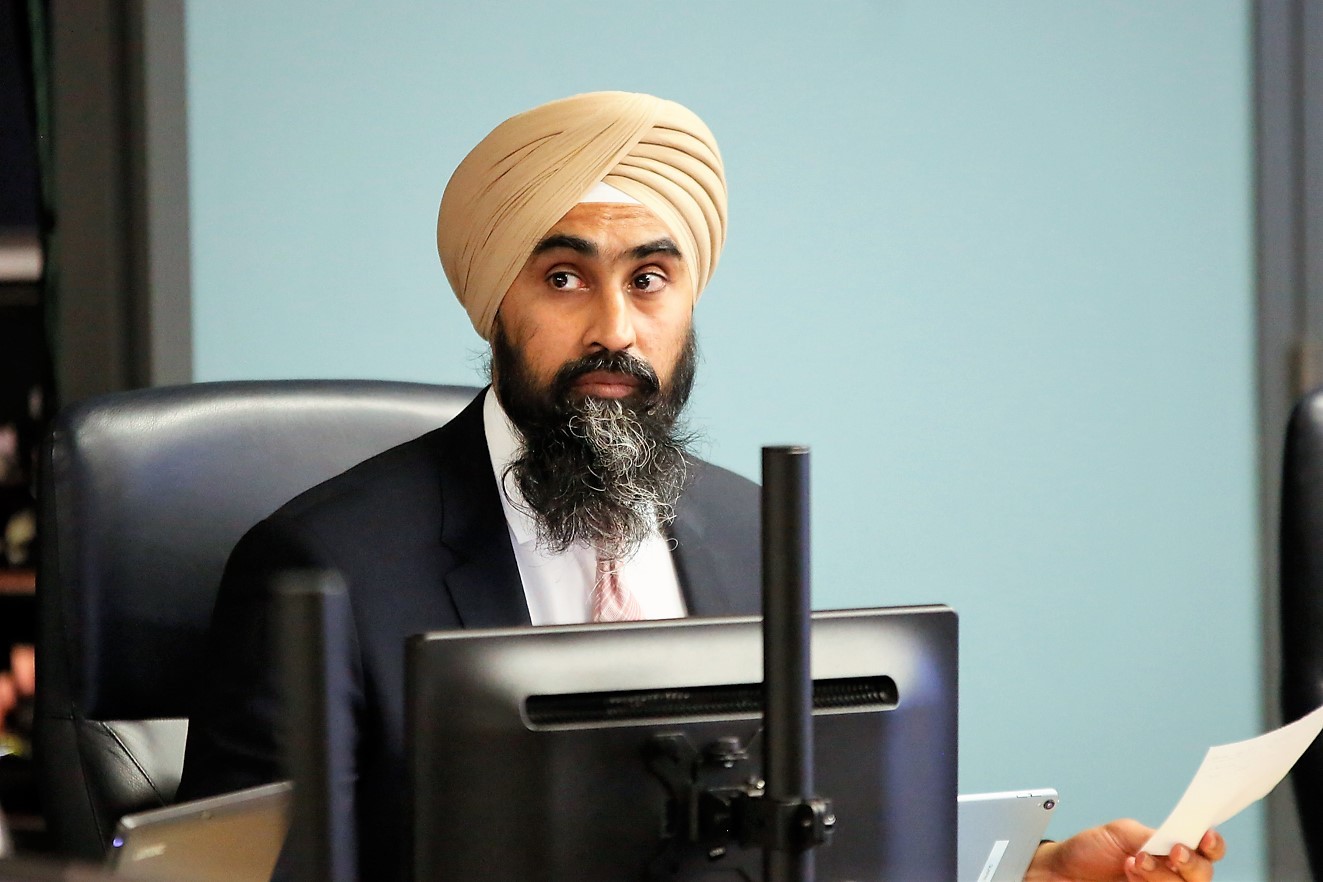
Regional Councillor Gurpreet Dhillon
Throughout the last term of council, Brampton residents swallowed successive tax increases well above the rate of inflation. If Brown and his fellow council members are able to achieve the freeze, it would not only break this trend, but snap projections made in the city’s long term financial master plan, which predicted the city would be able to get away with “manageable” tax increases between three and five percent annually over the next 10 years.
Given this fiscal reality, on top of the city’s need to find $90 million for a new downtown university campus, after the Doug Ford government at Queen’s Park pulled the money, and a growing list of other pressing demands, such as increased transit service and the city’s share of healthcare expansion, finding ways to freeze the budget is sure to be a challenge.
The city was already facing infrastructure issues, with aging water mains, sewer lines and other structural features in need of repair or replacement. While the Region of Peel pays for much of that work, the city often covers surface costs, and holding off on such projects could lead to even more expensive problems if such infrastructure starts to fail. A badly needed downtown project originally estimated at $33 million was just postponed by council, partly because the cost had ballooned. But the need for the work hasn’t changed.
A tax freeze would be more than welcome for residential taxpayers, but it could spell tough decisions in other areas of the city’s budget as staff and council search for areas to make up the revenue, or places where services can be cut to save money.
Other cities across the GTA that have attempted to reduce tax increases recently have proposed shutting down popular programs such as recreational activities for children, or have increased user fees, which effectively are a type of tax increase on residents who take advantage of such services.
Complicating the matter are several key initiatives the city will need to put considerable funding toward in the years ahead. While the Downtown Reimagined project remains on hold for the time being, it will still require at least $30 million in funding to complete. Any surface upgrades for the Main Street LRT and associated studies for it remain a big question mark in the downtown, as the capital cost of at least $300 million remains unfunded. Council and staff will also have to factor $50 million over 10 years already committed for the downtown university campus and an additional $100 million promised for an innovation centre in collaboration with the Ryerson University plan.
Submit a correction about this story


